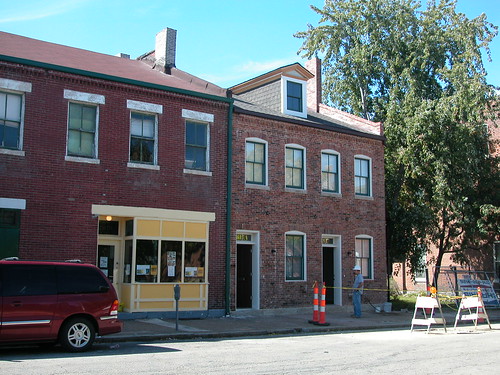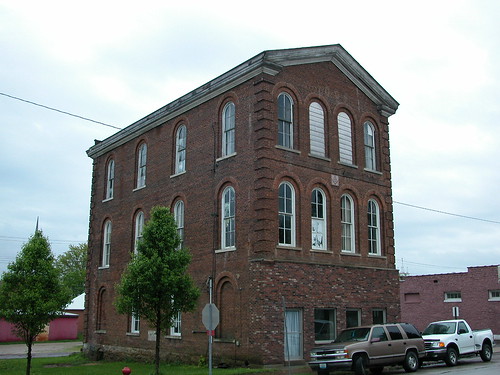by Michael R. Allen
Today the Missouri Senate will convene to consider the “economic development” bill (HCS SS SCS SB 8 ) passed by the House last week that would cut neighborhood and Main Street development across the state. The bill’s most damaging provisions are those that cap the issuance of historic tax credits for “small” projects at $10 million a year and one that would prohibit stacking the 9% low income and historic rehab tax credits. Anyone who has observed the renewal of urban neighborhoods and small towns across the state knows that small projects have led the way, and that stacking historic and low income tax credits have made transformative projects like Dick Gregory Place in St. Louis’ Ville possible. The use of these credits has created economic growth that has outpaced the US GDP, strengthened real property values and created wealth for thousands of Missourians.

These tools are not being curtailed to save the state money, or to cut back on tax credits. The Republicans in the legislature are not conservatives in any fiscal sense, because their leadership wants only to remove some credits to create new ones for cargo warehouses in suburban St. Louis, to lower the state corporate income tax and to increase the amount of money available each year — and the categories of eligible spending — for the Distressed Areas Land Assemblage Tax Credit (DALATC). While the leadership in the houses fortunately has failed to find consensus on how to shift available tax breaks from middle-class property owners to wealthy investors, there seems to be a possibility that the bill might be reconciled in conference if the Senate passes it.
Passage of the bill, and Governor Nixon’s signature, would be mistakes. Missouri’s strength comes from people who care about their communities enough to invest in their homes and buildings housing small businesses. These are people fighting similar patterns of disinvestment across the state, found on large scales in parts of St. Louis and Kansas City but also in small towns robbed of vitality and local wealth by corporate chains like Wal-Mart. The historic tax credit has enabled average people to reclaim their communities, and create skilled construction and professional jobs in the process. Not only have vacant or aging buildings been revitalized, but wealth has been created in local economies. Developers with larger capacity have joined these efforts by tackling big buildings.

Every year, the legislature seems to increase the flow of incentives toward activities that create wealth at the expense of communities. Cuts across the board would be one thing, and a philosophically consistent tax policy another. That is not what is on the table right now. Government policies that threaten local economies are far from conservative in any traditional sense. The legislature is looking at curbing proven, sustainable community development in order to enable large-scale economic activity that may not create wealth for struggling communities. Our state will suffer if these changes move forward.

One reply on “Communities First”
Love this building. My wife and I were driving through here on the way back from a hike at Pickle Springs, and Hickory Canyon Natural Area, when we dropped ourselves in the middle of Ironton.
I remember saying to her, “I wonder if that’s an IOOF hall”. Sure enough, on further investigation, I could discern the fading ghost of the IOOF lettering (I wonder if the letters were made of plaster?) on the facade, above the third story windows. This structure has really beautiful proportions, no? Simple, yet elegant. There’s also a wonderful Gothic church in town, with the original patterned slate roof. Oh, hell, just go and take a look around folks, this is a nice little town, still possessing quite a decent collection of its older structures. Good road trip at least.
As for the whores in the MOLeg, well, they only seem to do things these days which have a benefit for the wealthy and the connected, so what you are describing is not out of character for them. Move along folks, nothing to see here.